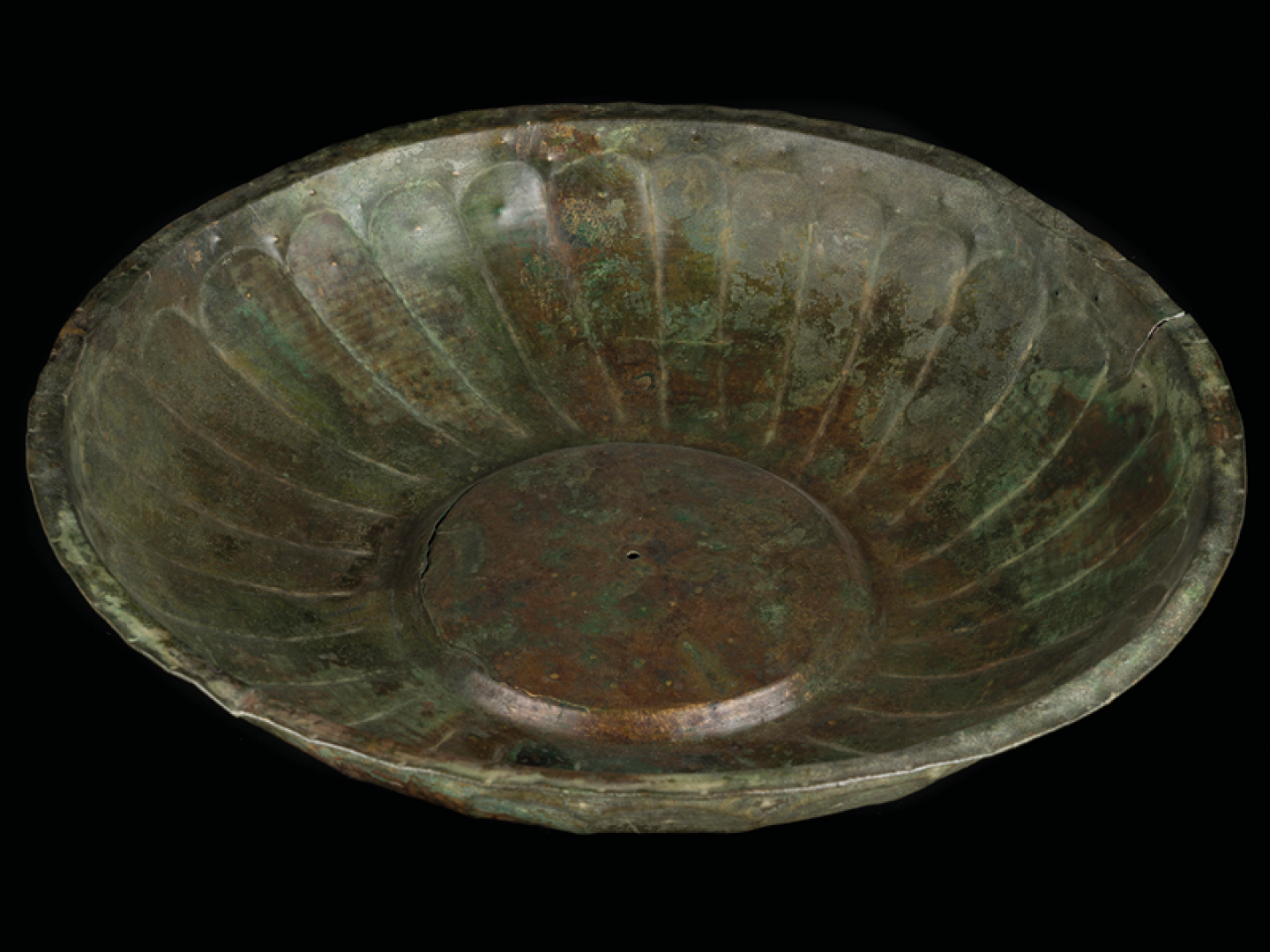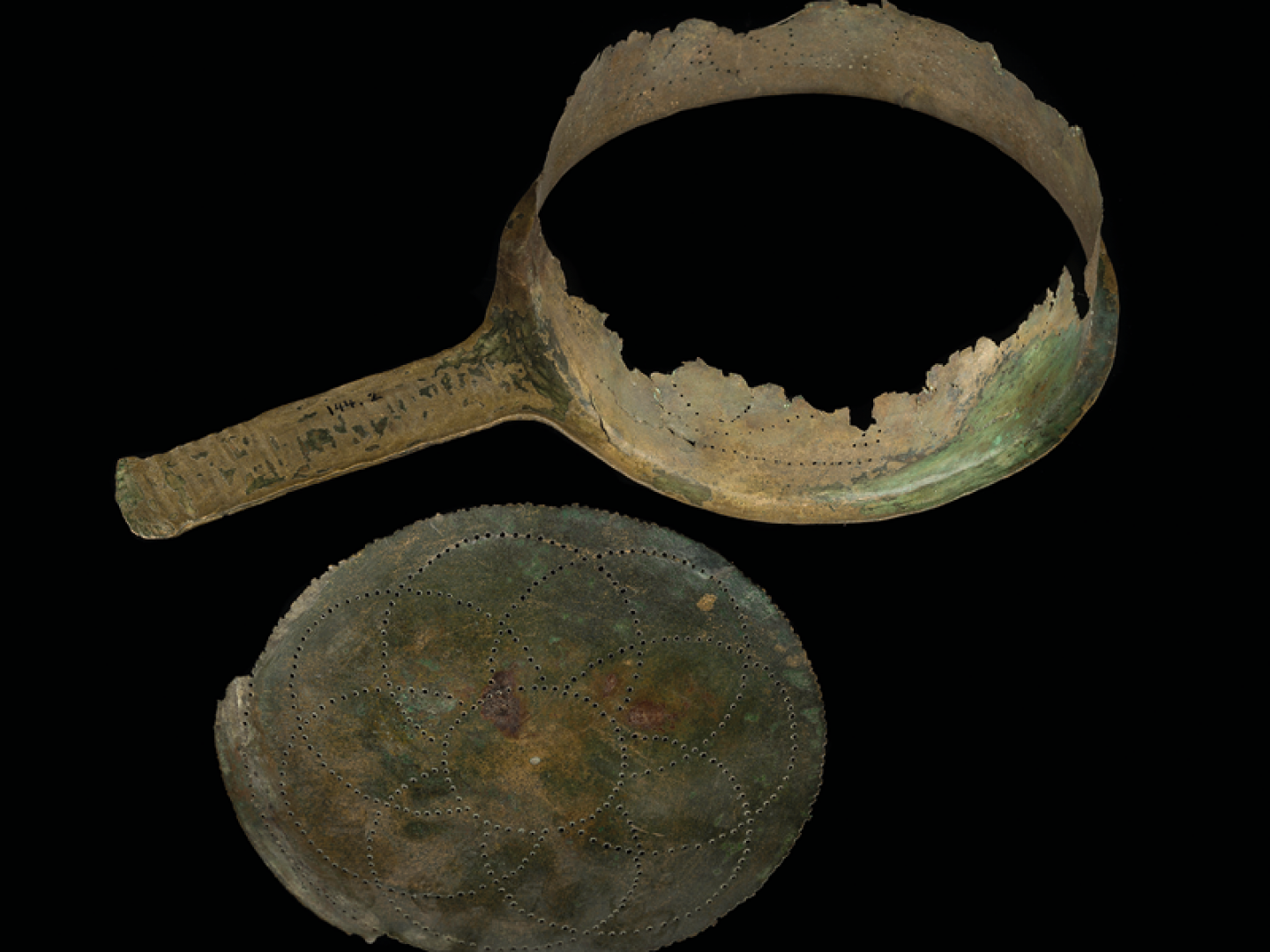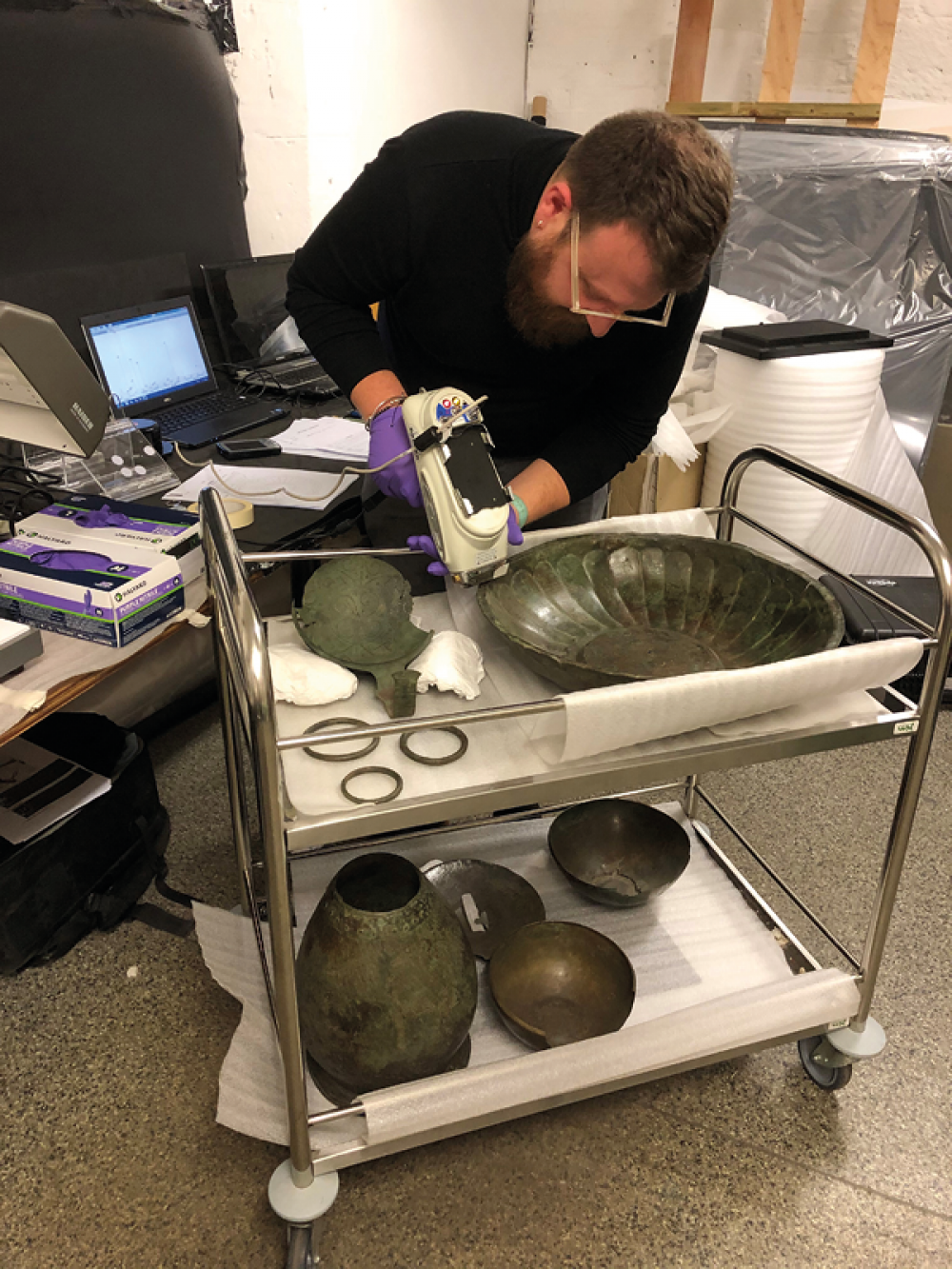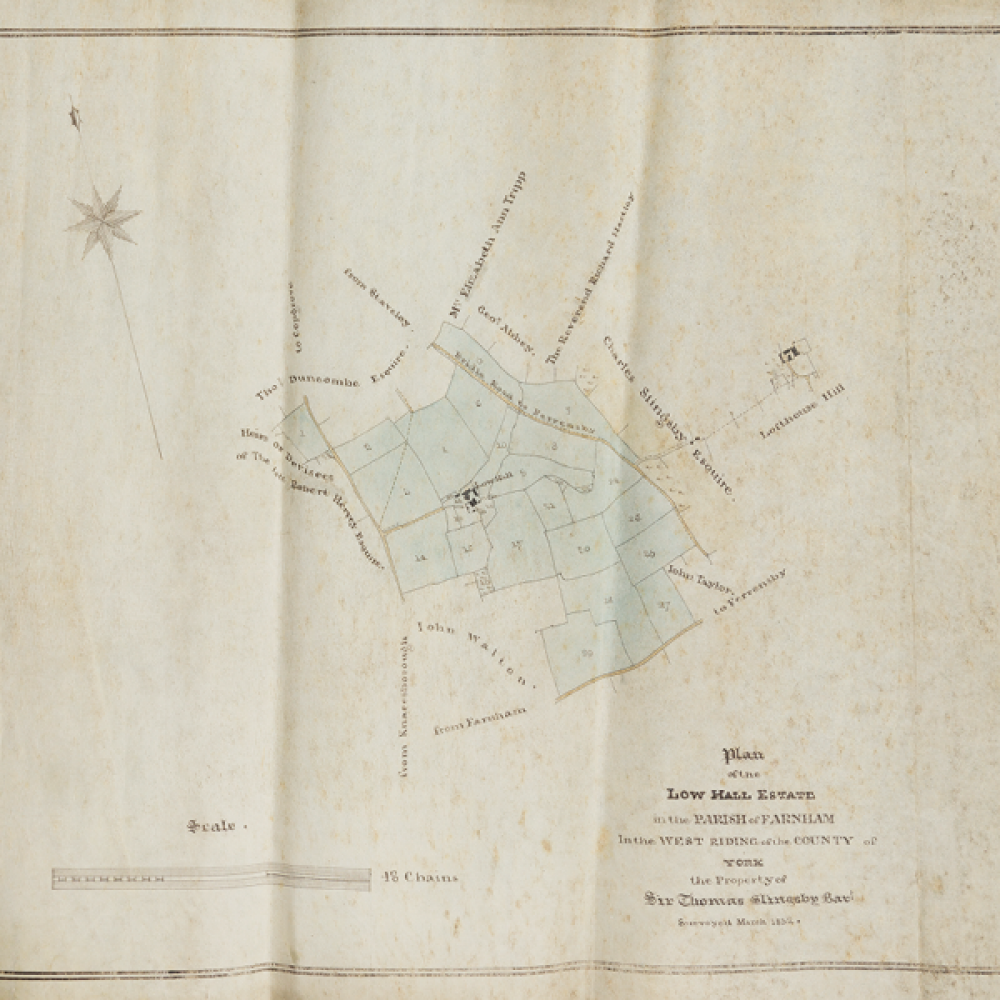Meet the North East Academics Who Have Completed Groundbreaking Research on Yorkshire's Knaresborough Hoard

It sounds like a new instalment of Indiana Jones; an overlooked hoard of treasure with a murky past, mysteriously missing artefacts, and, at the centre of it all, an academic determined to get to the bottom of it
First dug up near Knaresborough in the late 1800s, the late 4th century Roman collection of metal objects known as the Knaresborough Hoard (which includes bowls, pans and plates) is purportedly one of the largest in Europe but has never never undergone a detailed academic analysis. The exact location of its discovery was not known and the hoard had only been briefly catalogued – until now.
Under the supervision of Professor of Archaeology James Gerrard, Jessica DeMaso of Newcastle University is the first to carry out a comprehensive study of the collection as part of her MA degree, which has since been published in The Antiquaries Journal. Professor Gerrard had been aware of the collection ever since his time spent at the University of York as a Postgraduate.
‘I worked on late Roman pottery and in the Yorkshire Museum which was just around the corner from the department of archaeology. There was an amazing collection of bronze vessels on display – the Knaresborough Hoard,’ he explains. ‘A few years ago, the Yorkshire Museum had this project called Old Collections, New Questions and one of the projects they were suggesting was the Knaresborough Hoard. I had a great MA student at the time, Jess DeMaso, and I said “why don’t you take it on as your dissertation?”’
But where to begin? With little academic attention paid to the the hoard over the years, besides small entries written when it was displayed in the 19th century, and only limited cataloguing done by the museum, building an academic analysis of the collection and its history was bound to be difficult. ‘It initially started just with the catalogues because [the collection] really had never been recorded to any level of specificity. It was just like “these are some objects that we have”,’ says Jess. ‘Then to make the story more rich and have more depth, Professor Gerrard suggested I look into the surrounding articles and the story of the hoard, which obviously is very important to the artefacts themselves.’ A brief piece of work on the hoard was produced in the 20th century by H. Eggers, which they were able to draw upon.
‘That was probably the best description of it, but it was in a German journal and although I haven’t been able to find out how long Eggers spent with the hoard, I don’t think it was very long. He sketched the vessels very roughly and gave a little summary of it too,’ James notes.



And so work began, with the invaluable help of the Yorkshire Museum. As they worked, scouring through archival material from the time it was found, the history of the hoard’s discovery slowly became clearer, ‘We knew that it had been given to the Yorkshire Museum by a man called Thomas Gott and he lived in Knaresborough,’ James explains. ‘Thomas Gott was quite an important man in Knaresborough. He was actually a businessman and was described as a blacksmith. When he died, he left around £16,000 and that was in 1877, so it was quite a lot of money and he was part of an organisation called the Knaresborough Improvements Commission, so he was an important character about town.’
Although the background on Thomas Gott was useful and helped to add life to the story, an issue remained – Gott had never revealed where the treasure had been found. Moreover, it seemed that much of the original hoard reported by Gott was missing from the collection now. ‘There are little snippets here and there about cups that Thomas Gott and his friends might have kept for themselves which still might be out there today,’ Jess says. Gott may have kept some of the hoard for himself, but it also seems that much of the hoard was lost to something as simple as human error after it was unearthed. ‘When it got to Thomas Gott’s iron foundry he wasn’t there, and the foreman thought it was a load of scrap and melted it,’ James explains. ‘So it was probably the biggest ever hoard of copper alloy vessels found from Roman Britain and the 19th century account says it either filled a sack or a cart before it was melted down. It was an absolutely massive copper alloy hoard, much bigger than any of the other ones we have, and we’ve just got this little bit left.’
But the question still remained – where exactly was the hoard found? With a lot of diligent work and no small amount of luck, we may at last have an answer. ‘Gott never told us precisely where it came from, but he did say that it was found two miles north of Knaresborough by some men digging a drain. We looked on the map and two miles north of Knaresborough is the village of Farnham and we discovered that Gott owned property in Farnham, but none of that property had land that needed draining,’ James explains. A dead-end perhaps, but they persevered. ‘The place that looked like it might have needed draining was a place called Low Hall and the tenant farmer there was another Knaresborough Improvement Commissioner like Gott. There was a particularly wet field called the Bottoms and by some miracle Leeds University Library have the archive of that farm, and they had a diagram showing the new drain that was being dug through it at Low Hall in 1863 (and the hoard was found in 1864),’ he continues. ‘So presumably they found it when they were draining this boggy bit of land and the tenant farmer thought, my friend Thomas Gott the blacksmith will be interested in all of these metal vessels and axes and iron tools, and it then passed into Thomas Gott’s hands.
‘When we discovered the estate papers for Low Hall were in Leeds University Library, it was just a shot in the dark. There might be something there,’ James says. ’We spent a couple of days in Leeds University Library looking at a pile of documents that no one has ever looked at and found as close to a smoking gun as we could get.’

As well as finally being able to pinpoint the actual location of where the hoard was found, and developing a more fleshed-out background of its history, Jess set about creating a solid foundation for any future research on the hoard. ‘I went down to York probably about six or seven times over the course of a few months to study them and I did a lot of drawings because they had never properly been recorded. I drew all of the artefacts, which definitely took a lot of time, and measured and digitised the drawings. So now we have visual representations which can be hard to get with photographs because the artefacts themselves are so dark, and sometimes you can’t really see them.
‘After doing all of this research, it is still surprising to me that it really had never been researched before because the hoard is such a buzzword and people are automatically drawn to that kind of thing, so it’s just interesting that no one else picked up on it. I think that is the part that still surprises me, because it is such an intriguing story that we did a lot of hard work on, but it was just there. I think what makes it special is probably the composition of objects – there’s some axes along with some bowls, hanging bowls and such. This composition of objects together in a hoard is very unusual.’
The research demonstrates beyond doubt that there is value in revisiting older collections rather than always seeking out the new – something that James agrees with. ‘Any kind of archaeology is destructive and if you dig a site you destroy it. When you produce an archive of objects that go into a museum, the idea is that those objects are there to be studied. A very small minority of objects go on display and people look at them, but most stuff sits in a museum store, and if we don’t use that material then why are we storing it? And why are we digging up more sites if we haven’t made the most out of the material that we’ve already got?
‘This was discovered 160 years ago and all kinds of things have changed since then. We know much more about the Roman period, we know much more about the kinds of objects that were being used, and we’ve got much better analytical techniques, so we can revolutionise our understanding of some of these old finds.’










